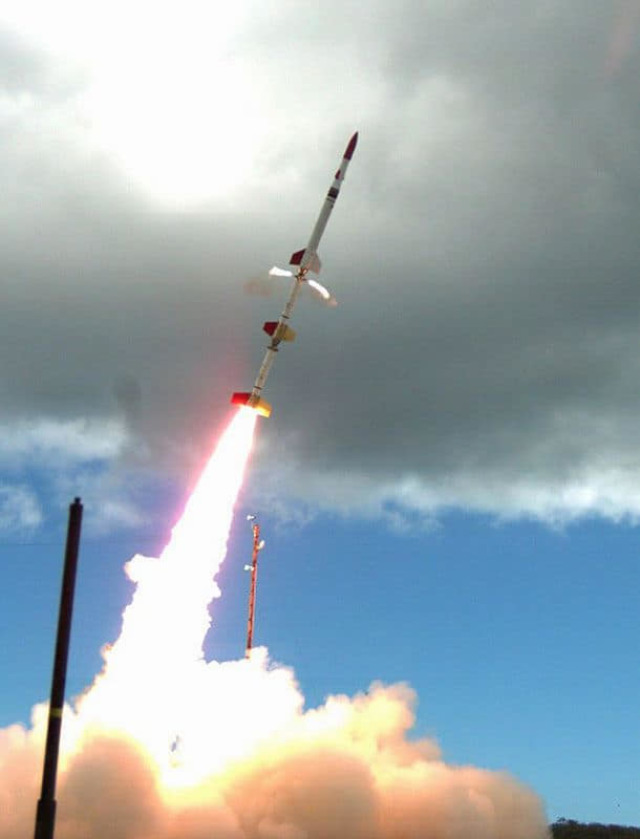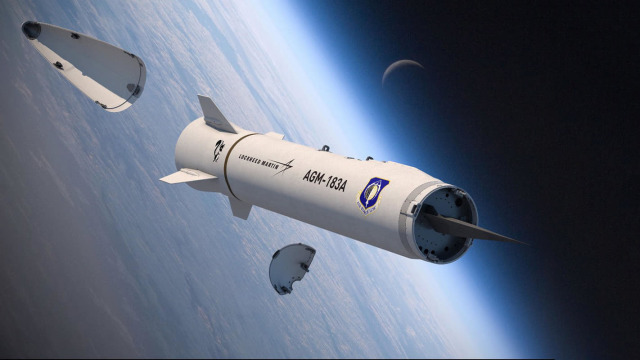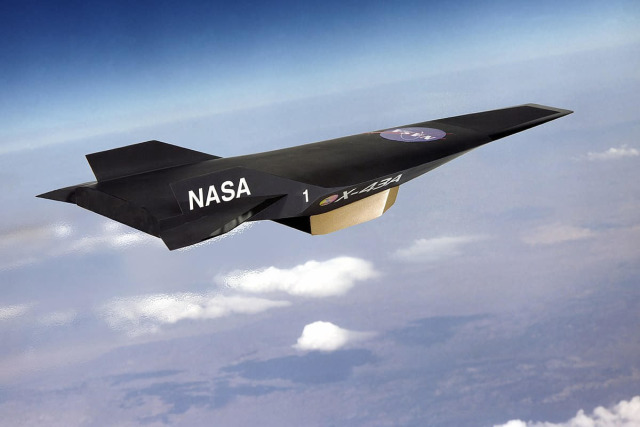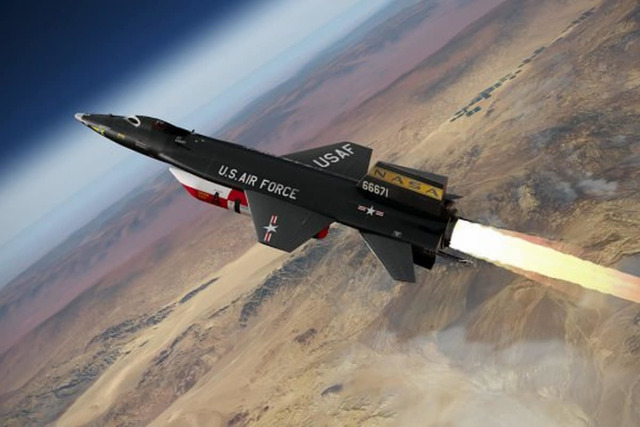Let's continue the topic of hypersonic flight. As noted in the first part of the article , there are two main forms of hypersonic weapons: hypersonic Glide Vehicles (HGV) and Hypersonic cruise Missile (Hypersonic Cruise Missile, HCM) with an air-jet propulsion system.
Traction on demand
With regard to the HGV, the optimal solution is probably to install a specially designed engine on it. In mid-2021, within the framework of the DARPA "Operational Fires" (OpFires) program, a throttled solid-fuel engine of the second stage, developed by the American company Aerojet Rocketdyne, successfully passed full-scale static tests. At the same time, he demonstrated a technology that provides traction termination on demand.
In accordance with the modification of the contract concluded with Lockheed Martin Missile & Fire Control, the OpFires program has moved to phase 3b. Within its framework, it is planned to create a ground-based hypersonic medium-range missile and conduct its flight tests. According to experts, the thrust termination function is necessary for the delivery of hypersonic gliding weapons to various ranges after launch from a mobile ground launch platform suitable for rapid deployment and redeployment.

A multi-stage configuration using solid-propellant rocket engines TERRIER and ORIOLE was used to launch the product HIFiRE 2 (Hypersonic International Flight Research Experiment Program 2) and bring it to the speed required to launch the gas turbine engine.On May 27, 2021, Lockheed Martin and Northrop Grumman successfully conducted ground tests of a solid-fuel rocket engine of the first stage designed for the "Conventional Prompt Strike" (C onventional Prompt Strike, CPS) and "Long Range Hypersonic Weapon" (Long Range Hypersonic Weapon, LRHW) programs
The U.S. Navy and the U.S. Army, respectively. It is expected that CPS and LRHW will use a common missile suitable for firing from surface ships, submarines and mobile land-based launchers.
In turn, the US Air Force studied two concepts of a hypersonic air-based missile proposed by Lockheed Martin: "Rapid Reaction Weapon" (Air-Launched Rapid Response Weapon, AARW) and "Hypersonic non-nuclear Strike Weapon" (Hypersonic Conventional Strike Weapon, HCSW).
At the beginning of 2020, priority was given to the AGM-183 product developed within the framework of AARW. It turned out to be smaller than HCSW, which allows it to be transported on the axial reference point of the F-15 "Eagle". It is reported that the air envelope used to protect the payload of the hypersonic gliding unit is reset after the launch vehicle burns out and reaches a speed of about Mach 5.
As you know, the early flight tests of the AGM-183 failed: the rocket either could not separate from the launch platform, the B-52H Stratofortress bomber, or separated, but could not launch its accelerator. The test conducted on May 14, 2022, was completed successfully: the rocket separated from the B-52H, turned on its accelerator and reached a speed of more than Mach 5.

The AGM-183 product after resetting the payload protection. SketchRamjet engine (RAMJET)
The search for an air propulsion system capable of developing ever higher speeds has been going on since the dawn of the jet era. Afterburner turbojet engines or turbofans satisfied the needs for supersonic flight up to Mach 2 and above. At the same time, as the speeds approached or exceeded Mach 3, this technology barely coped.
At speeds of Mach 3 or higher, a RAMJET can be a useful powerplant. It has a relatively simple configuration and relies on the forward motion of the engine to create thrust. The inlet is designed to compress and slow down the supersonic air flow to subsonic speed before it is directed into the combustion chamber.
The inlet air temperature increases with the speed required for the flight of a ramjet engine. This reduces the difference between the inlet temperature and the outlet temperature, thereby reducing the energy that can be extracted in the form of thrust. As a result, most aircraft with RAMJET fly at a speed of no more than Mach 4.5.
 |
| NASA hypersonic aircraft. |
| Source: invoen.ru |
Hypersonic jet engine (GPVRD)
To achieve higher flight speeds, incoming air must slow down and compress much less than usual in a RAMJET. This minimizes the temperature rise. As a result, the combustion chamber must be designed to withstand supersonic air flow. The resulting power plant is classified as a ramjet supersonic combustion engine. The term is usually abbreviated to GPVRD.
To obtain hypersonic thrust, GPVRD are more efficient than rocket engines. They are capable of providing a long powered flight, but for their operation it is necessary to increase the speed to high. The easiest way to do this is to use a rocket booster as the first stage. Since its task is limited to the initial phase of the flight after launch, the accelerator will be smaller than required for the HGV. As a result, in order to achieve equal range, a weapon with a GPVR turns out to be smaller and easier than a solution with a planning unit.
To be continued…
According to the materials of the resource euro-sd.com

